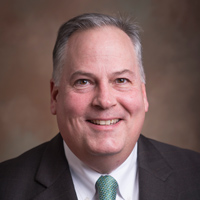Age Targets: How Much Should You Have Saved for Retirement By Now?
Retirement savings benchmarks can be helpful tools to prompt action ... IF they're realistic. See if your savings are at least in the right ballpark.


If you want to track your progress toward a goal, chances are there is an app that can do that for you. For example, you can track your steps, your packages, your diet and even your family’s whereabouts.
But when it comes to saving for your retirement, how much time do you spend tracking your progress? And at what point in your life should you start paying attention?
Retirement planning can be intimidating at any age — even more so early in your career. When retirement seems so far in the future, it’s hard to plan for it with so many competing priorities in the present. For example, in addition to your regular bills, you may have student loans to repay. Or you may be trying to save money to purchase a home or save for your kids’ college education.

Sign up for Kiplinger’s Free E-Newsletters
Profit and prosper with the best of expert advice on investing, taxes, retirement, personal finance and more - straight to your e-mail.
Profit and prosper with the best of expert advice - straight to your e-mail.
Still, it’s important to make steady progress toward saving, no matter what your age. Moreover, taking stock of where you stand can help you plan with more intention based on your situation.
So, I’m 35. What Should I Have Saved?
There is a lot of research showing that people tend to rely on approximations or rules of thumb when it comes to financial decisions.
With this in mind, many financial firms publish savings benchmarks that show the ideal levels of savings at different ages relative to an individual’s income. A savings benchmark isn’t a replacement for comprehensive planning, but it is a quick way to gauge whether you’re on track. It’s much better than the alternative some people use — blindly guessing! More importantly, it can act as a catalyst to take action and start saving more.
However, for the benchmark to be useful, it needs to be realistic. Setting the target too low can lead to a false sense of confidence; setting it too high can discourage people from doing anything. Articles on retirement savings goals have generated spirited discussion about the reasonableness of the targets.
Last year, my colleagues and I re-evaluated how to calculate achievable benchmarks. We started with the goal in mind: determining the amount of assets needed by age 65. While that number depends on a lot of factors, income is the biggest one. Since higher earners will get a smaller portion of their income in retirement from Social Security, they generally need more assets in relation to their income. We estimated that most people looking to retire around age 65 should aim for assets totaling between eight and 14 times their preretirement gross income.
From there, we identified savings benchmarks at other ages based on a reasonable trajectory of earnings and savings rates. We didn’t presume that everyone starts saving our recommended 15% of their income immediately upon receiving their first paycheck. Rather, our hypothetical investor starts saving 6% at age 25 and ramps savings up by 1 percentage point each year until reaching an appropriate level. We found that 15% of income per year (including any employer contributions) is an appropriate savings level for many people, but we recommend that higher earners aim beyond 15%.
A Look at the Benchmarks
Considering all this, here are some savings benchmarks for people in the following age groups:

| Investor's Age | Savings Benchmarks |
|---|---|
| 30 | Half of salary saved today |
| 35 | 1x to 1.5x salary saved today |
| 40 | 2x to 2.5x salary saved today |
| 45 | 2.5x to 4x salary saved today |
| 50 | 3.5x to 6x salary saved today |
| 55 | 5x to 8.5x salary saved today |
| 60 | 6.5x to 11x salary saved today |
| 65 | 8x to 14x salary saved today |
Key Assumptions: Household income grows at 5% until age 45 and 3% (the assumed inflation rate) thereafter. Investment returns before retirement are 7% before taxes, and savings grow tax-deferred. The person retires at age 65 and begins withdrawing 4% of assets (a rate intended to support steady inflation-adjusted spending over a 30-year retirement). Savings benchmark ranges are based on individuals or couples with current household income between $75,000 and $250,000. Target multiples at retirement reflect estimated spending needs in retirement (including a 5% reduction from preretirement levels), taxes and Social Security benefits based on the ssa.gov Quick Calculator. See additional details in Are My Retirement Savings On Track?
So, to answer the question, we believe having one to one and a half times your income saved for retirement by age 35 is a reasonable target. It’s an attainable goal for someone who starts saving at age 25. For example, a 35-year-old earning $60,000 would be on track if she’s saved about $60,000 to $90,000.
The Benchmarks for Those Closer to Retirement
The range gets wider as you get older, so we also provide more detailed estimates for people approaching retirement. This helps someone find a realistic target based on age and marital status, which affects Social Security benefits.

How to Stay on Track
The point of benchmarks isn’t to make you feel superior or inadequate. It’s to prompt action, coupled with a guidepost to inform those actions, even if that means staying the course. If you’re not on track, don’t despair. Focus less on the shortfall and more on the incremental steps you can take to rectify the situation:
- Make sure you are taking advantage of the full company match in your workplace retirement plan.
- If you can increase your savings rate right away, that’s ideal. If not, gradually save more over time.
- If you have a company retirement plan that enables automatic increases, sign up.
- If you are struggling to save, many employers offer financial wellness programs or other tools that can help with budgeting and basic finances.
Use these savings benchmarks to get more comfortable with planning for retirement. Then go beyond the rule of thumb to fully understand your potential retirement expenses and income sources. Beyond your savings, think about what you are saving for and how you envision spending your time after years of hard work. After all, that’s the reason why you are saving in the first place.
Get Kiplinger Today newsletter — free
Profit and prosper with the best of Kiplinger's advice on investing, taxes, retirement, personal finance and much more. Delivered daily. Enter your email in the box and click Sign Me Up.

Roger Young is Vice President and senior financial planner with T. Rowe Price Associates in Owings Mills, Md. Roger draws upon his previous experience as a financial adviser to share practical insights on retirement and personal finance topics of interest to individuals and advisers. He has master's degrees from Carnegie Mellon University and the University of Maryland, as well as a BBA in accounting from Loyola College (Md.).
-
 Customer Services are Strained at the SSA, You Should Plan Around These Federal Holidays
Customer Services are Strained at the SSA, You Should Plan Around These Federal HolidaysIf you have a question or need information from a federal agency, check the federal holiday schedule to make sure you get your business done before they close.
By Donna LeValley
-
 Stock Market Today: No 'Powell Put'? No Problem
Stock Market Today: No 'Powell Put'? No ProblemInvestors, traders and speculators look beyond both another Trump post and more signs of slowing economic activity.
By David Dittman
-
 First 100 Days: Trump's Impact on Your Finances
First 100 Days: Trump's Impact on Your FinancesHere are some opportunities to consider regarding investing, interest rates and tax cuts as the financial landscape shifts under the new administration.
By Daniel Razvi, Esquire
-
 What Would Happen if You Put Your Tax Refund in an IRA?
What Would Happen if You Put Your Tax Refund in an IRA?Not only could you get a tax break, but the compounding effect over 35 years could turn the average refund into nearly $14,000.
By Romi Savova
-
 Children Can't Afford to Fly the Nest? Here's How to Help
Children Can't Afford to Fly the Nest? Here's How to HelpThe high cost of living means more adult children are staying at home. Here are four ways to help financially so they can eventually spread their wings.
By Kelli Kiemle, AIF®
-
 A QLAC Does So Much More Than Simply Defer Taxes
A QLAC Does So Much More Than Simply Defer TaxesHere are the multiple ways you can use a QLAC, from managing retirement risks to creating income for specific retirement needs and wants.
By Jerry Golden, Investment Adviser Representative
-
 Self-Directed Brokerage Accounts: Retirement's Hidden Gem?
Self-Directed Brokerage Accounts: Retirement's Hidden Gem?SDBAs are often overlooked, but they can offer more flexibility and growth potential inside your 401(k) when actively managed by a professional.
By Scott M. Dougan, RFC, Investment Adviser
-
 Early-Stage Startup Deals: How Does a SAFE Work?
Early-Stage Startup Deals: How Does a SAFE Work?Investing in an early-stage startup can get complicated fast, so the venture capital industry turns to other investing options. One is a SAFE.
By Murat Abdrakhmanov
-
 Should You Hire a Public Adjuster for Your Insurance Claim?
Should You Hire a Public Adjuster for Your Insurance Claim?As natural disasters strike more often, insurance clients are asking, 'What should I do, or who should I hire, if my insurance company is jerking me around?'
By H. Dennis Beaver, Esq.
-
 Tips to Help Entrepreneurs Create Self-Sustaining Businesses
Tips to Help Entrepreneurs Create Self-Sustaining BusinessesWith the right processes and people in place, a truly sustainable business can be efficiently passed on to a successor and run profitably on its own.
By Jason L Smith, CEP®, BPC